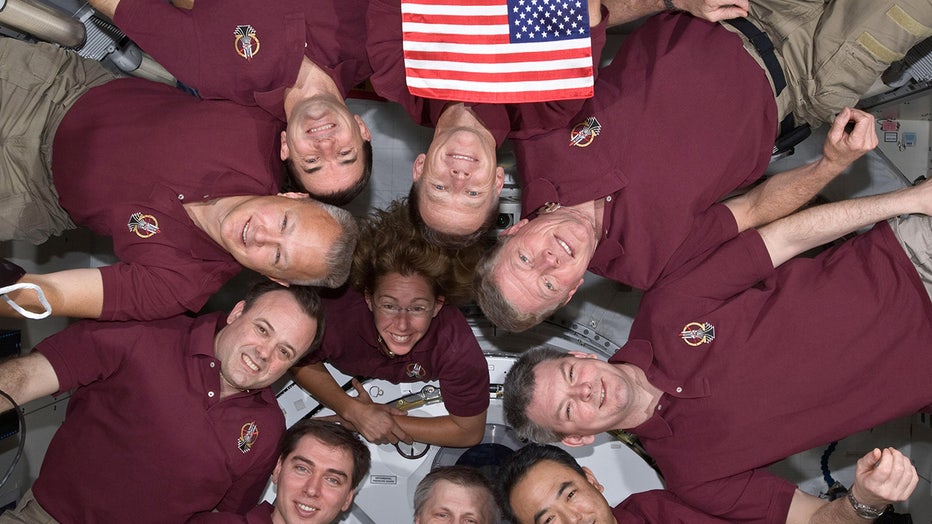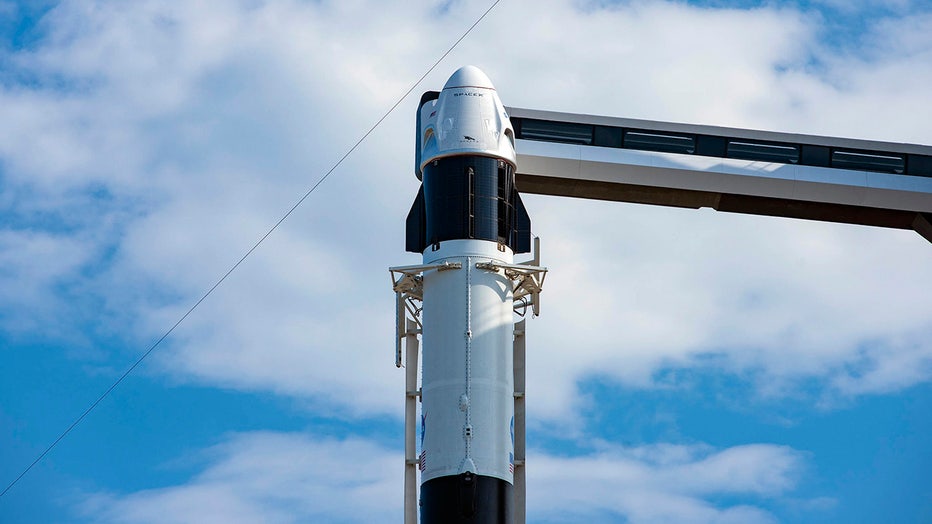Cleared for historic launch, SpaceX likely to win out-of-this-world ‘capture the flag’ race
CAPE CANAVERAL, Fla. - When the Apollo 11 crew blasted off from Launch Pad 39A at Kennedy Space Center nearly 51 years ago, their launch ended the race for the moon. And when astronauts Robert Behnken and Douglas Hurley launch from the same pad Wednesday, they’ll be ending another space race.
No astronauts have flown to orbit from American soil since the retirement of the space shuttle fleet in 2011. Instead, NASA has been buying rides aboard Russia’s Soyuz capsules, which launch from Kazakhstan.
Throughout that time, NASA commercial partners SpaceX and Boeing have been working to develop their own spacecraft to taxi astronauts to and from the space station. It was a race for history and prestige – the first private company to launch humans into space, and the right to fly the American flag in space again.

The Crew Dragon capsule sits atop a Falcon 9 rocket at Kennedy Space Center, ready for the DM-2 mission (SpaceX photo)
HIGH-FLYING PRIZE
The last shuttle mission to the space station left a fitting prize for the winner of that race.
The crew of Atlantis – Hurley among them – pinned an American flag on the docking hatch of the space station, ready for the winning company to capture. And it’s not just any flag – it also flew aboard space shuttle Columbia’s maiden voyage in 1981.

The historic flag is bracketed by mission patches from the first and last space shuttle flights inside the International Space Station's Node 2, or Harmony, module. (NASA photo)
"It hopefully will maintain a position of honor until the next vehicle launched from U.S. soil brings U.S. astronauts up to dock with the space station," Commander Christopher Ferguson explained in a phone call with then-President Barack Obama during the mission.
"Good luck to whoever captures that flag," the president replied.
Once retrieved, there’s no word on what SpaceX and the DM-2 crew may do with the flag, which is likely the most-traveled pennant in history. Between its July 2011 liftoff and Wednesday’s planned launch date, the flag will have circled Earth nearly 52,000 times – plus another 36 on STS-1.

Posing with the flag: The STS-135 crew consisted of NASA astronauts Chris Ferguson, Doug Hurley, Sandy Magnus and Rex Walheim; the Expedition 28 crew members are JAXA astronaut Satoshi Furukawa, NASA astronauts Ron Garan and Mike Fossum, and Russian
CLEARED FOR LAUNCH
The SpaceX DM-2 mission is scheduled to lift off at 4:33 p.m. on May 27. NASA cleared the way for the mission after a two-day review that ended Friday, not long before SpaceX performed a standard test-firing of the Falcon 9 rocket’s engines on the launch pad. The company later confirmed that the test went well and everything is on track for Wednesday's launch.
It's not clear yet how long the mission will last; NASA and SpaceX say it will depend in part on how the Dragon capsule performs. It could be anywhere between one and four months before Behnken and Hurley pilot the capsule back to Earth.
RELATED: Who are the astronauts that will embark on the first manned mission into space in nearly 10 years?
Typical summertime thunderstorms have begun appearing across Florida this week and could be a factor because the mission has no wiggle room time-wise. If the weather or any technical problems prevent liftoff at 4:33, the launch will be scrubbed until a second attempt Saturday.
Meteorologists with the 45th Space Wing predict a 40-percent chance that weather will force a delay Wednesday.

A close look at the Crew Dragon capsule, ready for flight atop its Falcon 9 rocket. (SpaceX photo)
Despite the historic nature of the launch, NASA and SpaceX have urged tourists not to line Florida’s east coast beaches and bridges to watch the launch as a result of the COVID-19 pandemic. They’re encouraging Americans to watch online and via social media instead.
RELATED: Will virus keep Florida spectators from historic astronaut launch?
Editor's note: An earlier version of this story misidentified the country from which Soyuz capsules are launched. This version has been corrected.


